
Orchid Leaves Wrinkled: Causes and Solutions for Healthy Plants
Orchids are renowned for their stunning blooms and delicate foliage, but when orchid leaves wrinkled, it can be concerning for plant enthusiasts. Understanding the reasons behind wrinkled orchid leaves is crucial to maintaining the health and vibrancy of these beautiful plants.
Orchid leaves are essential for the overall health and aesthetics of the plant. They play a crucial role in photosynthesis and energy production, providing the necessary nutrients for the orchid to thrive. Additionally, the leaves contribute to the visual appeal of the plant, adding to its overall beauty and allure.
When orchid leaves become wrinkled, it can be a sign of underlying issues such as inadequate watering, improper light exposure, or nutrient deficiencies. It is important to address these issues promptly to ensure the health and vitality of the orchid.
To maintain healthy and vibrant orchid leaves, it is crucial to provide the plant with the proper care and environmental conditions. This includes regular watering, adequate sunlight, and a well-balanced fertilizer regimen. Additionally, monitoring for pests and diseases is essential to prevent any potential harm to the leaves.
By understanding the importance of orchid leaves and providing the necessary care, enthusiasts can ensure the continued health and beauty of their orchid plants.
Table of Contents
ToggleUnderstanding Orchids
Overview of orchid types and their unique characteristics
Orchids are a diverse and beautiful group of flowering plants that come in a wide variety of shapes, colors, and sizes. There are over 25,000 different species of orchids, each with its own unique characteristics. Some common types of orchids include Phalaenopsis, Dendrobium, Cattleya, and Oncidium, each with its own distinct appearance and care requirements. Orchid leaves also play a crucial role in the health and vitality of the plant. The leaves contribute to the visual appeal of the plant, adding to its overall beauty and allure. When orchid leaves become wrinkled, it can be a sign of underlying issues such as inadequate watering, improper light exposure, or nutrient deficiencies. It is important to address these issues promptly to ensure the health and vitality of the orchid. To maintain healthy and vibrant orchid leaves, it is crucial to provide the plant with the proper care and environmental conditions. This includes regular watering, adequate sunlight, and a well-balanced fertilizer regimen. Additionally, monitoring for pests and diseases is essential to prevent any potential harm to the leaves. By understanding the importance of orchid leaves and providing the necessary care, enthusiasts can ensure the continued health and beauty of their orchid plants.
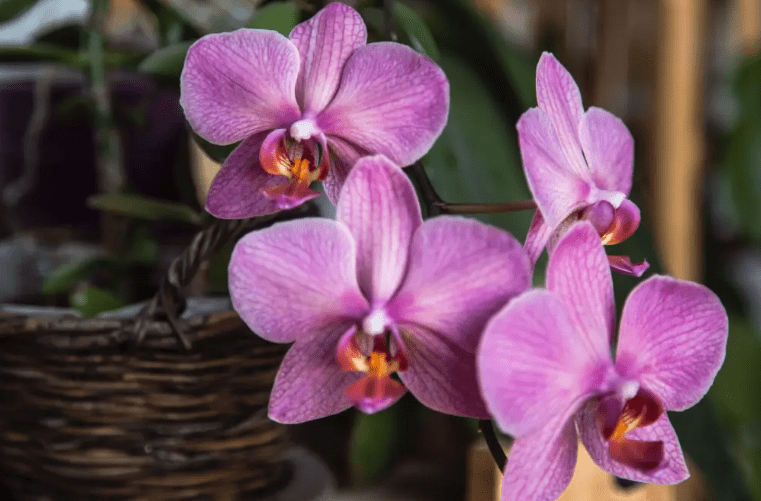
Importance of leaf health in orchid care
The health of a plant’s leaves is crucial for its overall well-being, and this holds true for orchids as well. The leaves of an orchid plant not only add to its aesthetic appeal but also play a vital role in its overall health. When orchid leaves become wrinkled or discolored, it can be an indication of underlying issues such as inadequate watering, improper light exposure, or nutrient deficiencies. Addressing these issues promptly is essential to ensure the health and vitality of the orchid.
To maintain healthy and vibrant orchid leaves, it is important to provide the plant with the proper care and environmental conditions. This includes regular watering, ensuring adequate sunlight, and implementing a well-balanced fertilizer regimen. Additionally, it is crucial to monitor for pests and diseases to prevent any potential harm to the leaves.
By understanding the importance of orchid leaves and providing the necessary care, enthusiasts can ensure the continued health and beauty of their orchid plants. Taking the time to monitor and care for the leaves will contribute to the overall well-being of the orchid and allow it to thrive.
Mention of common leaf problems in orchids, including wrinkling
When orchid leaves become wrinkled or discolored, it can be an indication of underlying issues such as inadequate watering, improper light exposure, or nutrient deficiencies. Addressing these issues promptly is essential to ensure the health and vitality of the orchid. To maintain healthy and vibrant orchid leaves, it is important to provide the plant with the proper care and environmental conditions. This includes regular watering, ensuring adequate sunlight, and implementing a well-balanced fertilizer regimen. Additionally, it is crucial to monitor for pests and diseases to prevent any potential harm to the leaves. By understanding the importance of orchid leaves and providing the necessary care, enthusiasts can ensure the continued health and beauty of their orchid plants. Taking the time to monitor and care for the leaves will contribute to the overall well-being of the orchid and allow it to thrive.
Causes of Orchid Leaves Wrinkling
Improper Watering Practices
Improper watering practices can lead to wrinkling and discoloration of orchid leaves. Overwatering can cause the roots to rot and the leaves to wilt, while underwatering can lead to dehydration and wrinkling. It’s important to find the right balance and water the orchid when the soil is dry to the touch. Proper drainage is also key to prevent water from sitting in the pot and causing root rot. By maintaining proper watering practices, you can help prevent the wrinkling of orchid leaves and promote the overall health of the plant.
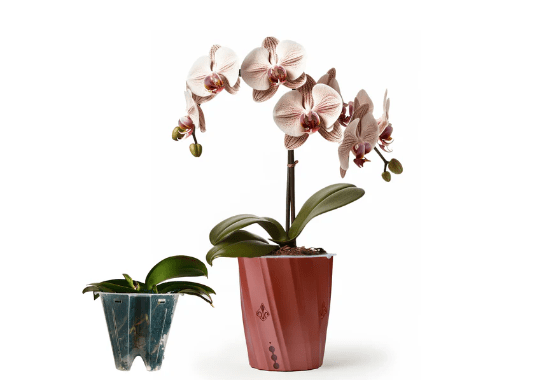
Lighting Requirements
Are an essential aspect of caring for orchid plants. Orchids require the right amount of light in order to thrive and produce beautiful blooms. Insufficient light can lead to weak, floppy stems and dull, dark green leaves. On the other hand, too much light can cause the leaves to become yellow or brown and develop sunburn. It is important to find the right balance and provide your orchid with the appropriate amount of light.
The amount of light needed for orchids can vary depending on the type of orchid you have. In general, most orchids require bright, indirect light. Placing your orchid near a window where it can receive filtered sunlight is usually a good choice. If you notice that your orchid is not getting enough light, you may want to consider using artificial grow lights to supplement its light needs.
It is important to monitor the lighting conditions for your orchid and make adjustments as needed. By providing the right amount of light, you can help your orchid to grow and thrive, and produce stunning blooms for years to come.
Temperature Stress
Can have a big impact on the health of your orchid. Orchids are sensitive to extreme temperatures, so it’s important to keep them in an environment with consistent temperatures. Sudden changes in temperature can cause stress to your orchid and affect its growth and blooming capabilities. It’s important to keep your orchid in a location with a stable temperature and avoid placing it near drafts or heating/cooling vents. Additionally, be mindful of the temperature fluctuations in different seasons and make adjustments as needed. By providing the right temperature conditions, you can help your orchid stay healthy and strong.
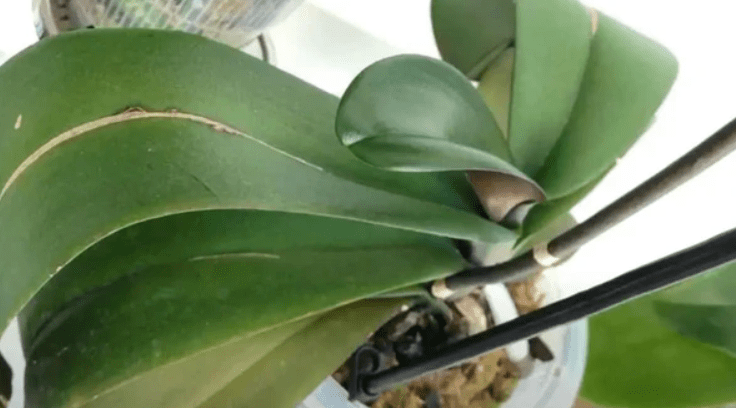
Humidity Issues
Humidity Issues can also pose a challenge for orchid care. Orchids thrive in environments with high humidity, but too much moisture can lead to root rot and other issues. On the other hand, low humidity can cause the orchid’s leaves to dry out and its growth to slow down. To maintain the ideal humidity level for your orchid, you can use a humidifier or a humidity tray. Misting the orchid’s leaves with water can also help to increase the humidity around the plant. It’s important to monitor the humidity levels in the area where your orchid is located and make adjustments as needed. By providing the right amount of humidity, you can ensure that your orchid remains healthy and continues to produce beautiful blooms.
Pests and Diseases
Common Orchid Pests
Orchids are beautiful and delicate flowers that require special care to thrive. One of the challenges of orchid care is dealing with common pests and diseases. Some of the most common orchid pests include aphids, scale insects, mealybugs, and spider mites. These pests can damage the leaves and flowers of the orchid, and if left untreated, they can even kill the plant. It’s important to regularly inspect your orchid for any signs of pests and take action to control them if necessary. In addition to pests, orchids are also susceptible to diseases such as root rot and fungal infections. Proper watering and ventilation can help prevent these issues, but if they do occur, it’s important to treat the orchid with the appropriate fungicides or pesticides. By staying vigilant and taking proactive measures to prevent and treat pests and diseases, you can help your orchid stay healthy and vibrant.
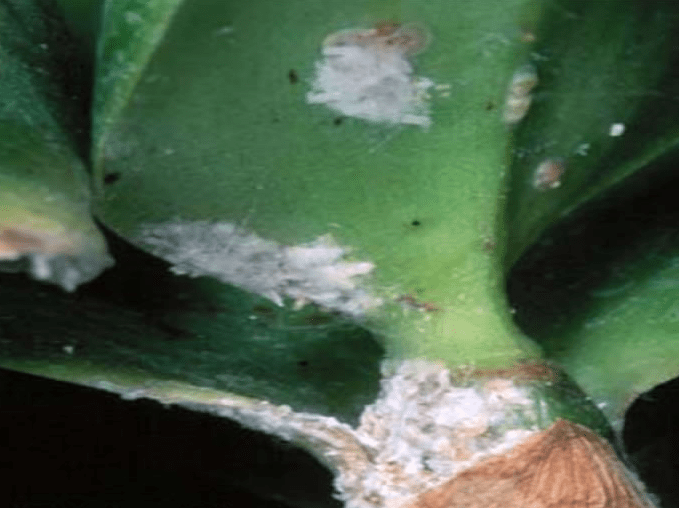
Fungal and Bacterial Infections
Are common challenges when it comes to caring for plants, including orchids. Fungal infections, such as powdery mildew and black spot, can cause discoloration and damage to the leaves and flowers of the orchid. Bacterial infections, on the other hand, can result in rotting of the plant tissue. To prevent these infections, it’s important to provide proper air circulation, avoid overwatering, and keep the orchid’s environment clean and free from debris. If an infection does occur, it’s important to treat it promptly with fungicides or bactericides to prevent it from spreading to other parts of the plant. Regularly monitoring the health of your orchid and taking proactive measures to prevent and treat fungal and bacterial infections will help keep your plant thriving.
Diagnostic Techniques
Visual Inspection
Is a crucial part of caring for your orchid’s health. By regularly inspecting your orchid, you can catch any issues early and take prompt action to address them. Look for any discoloration or damage to the leaves and flowers, as well as any signs of pests or diseases. It’s important to also check the roots for any signs of rot or disease. Regular visual inspections will help you keep your orchid healthy and vibrant. If you notice any issues during your inspection, be sure to take proactive measures to address them and prevent them from spreading. By staying vigilant and taking proactive measures, you can help your orchid stay healthy and thriving.
Root Examination
Is an important part of caring for your orchid. By examining the roots, you can assess the health and well-being of your plant. One diagnostic technique is visual inspection, where you carefully examine the roots for any signs of rot or disease. Healthy roots should be firm, white, and plump, while unhealthy roots may appear mushy or discolored. If you notice any issues during your examination, it’s important to take prompt action to address them. You can also consider using a root growth stimulant to promote healthy root growth. Additionally, repotting your orchid in fresh, well-draining potting mix can help improve its overall health. Regular root examinations and proactive measures will help keep your orchid strong and thriving.
Solutions for Wrinkled Orchid Leaves
Watering Adjustments
When it comes to watering your plants, it’s important to make adjustments based on their specific needs. Overwatering or underwatering can both have negative effects on the health of your plant. It’s important to examine the roots to assess the health of your plant and make necessary adjustments to your watering routine. Healthy roots should be firm, white, and plump, while unhealthy roots may appear mushy or discolored. If you notice any issues during your examination, it’s important to take prompt action to address them. Consider using a root growth stimulant to promote healthy root growth, and repotting your plant in fresh, well-draining potting mix can also help improve its overall health. By making these adjustments and regularly examining the roots, you can keep your plant strong and thriving.
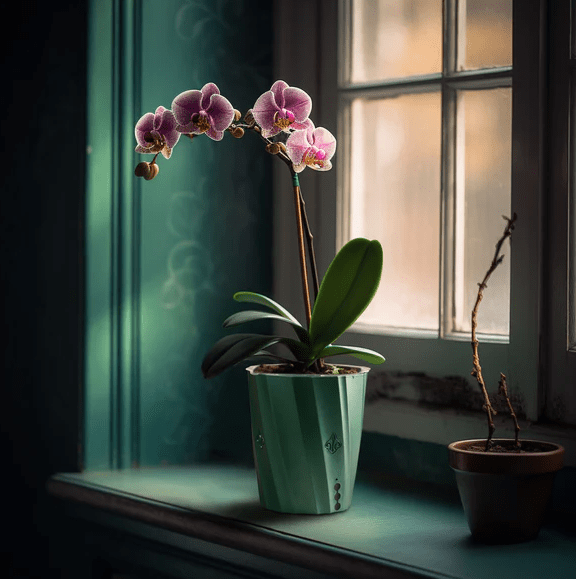
Lighting Optimization
Is crucial for the health and growth of your plants, especially for orchids. When it comes to providing the right amount of light for your orchids, it’s important to find a balance. Too much direct sunlight can cause the leaves to become wrinkled and discolored, while too little light can lead to weak and leggy growth. To optimize lighting for your orchids, consider placing them in a location where they can receive bright, indirect light for most of the day. This can be achieved by placing them near a south or east-facing window, or by using artificial grow lights to provide the necessary light intensity. It’s also important to monitor the temperature and humidity levels in the growing area, as these factors can impact the light requirements of your orchids. By optimizing the lighting conditions for your orchids, you can promote healthy leaf growth and vibrant blooms.
Temperature and Humidity Management
Are essential for creating the ideal environment for your plants, especially for orchids. Orchids thrive in specific temperature and humidity ranges, so it’s important to monitor and adjust these conditions to ensure the health and growth of your plants. Most orchids prefer daytime temperatures between 70-85°F and nighttime temperatures around 60-65°F. Additionally, maintaining a humidity level of around 50-70% can help orchids thrive. To achieve these conditions, you can use a humidifier, misting, or placing a tray of water and pebbles near the plants to increase humidity. It’s also important to consider the air circulation in the growing area to prevent stagnant air and humidity buildup. By managing temperature and humidity, you can create an optimal growing environment for your orchids and encourage strong, healthy growth.
Pest and Disease Control
Are essential for maintaining the health and vitality of your plants. It’s important to regularly inspect your plants for any signs of pests or diseases and take action to address them promptly. One common pest for orchids is scale insects, which can be controlled by using horticultural oil or insecticidal soap. For diseases, such as fungal infections, it’s important to remove any infected plant parts and treat the remaining plant with a fungicide. In addition to proactive measures, maintaining good sanitation practices, such as cleaning and disinfecting pots and tools, can help prevent the spread of pests and diseases. By implementing these pest and disease control measures, you can ensure that your plants remain healthy and vibrant.
Nutritional Support
Is crucial for the overall health and growth of your orchids. Providing the right balance of nutrients, such as nitrogen, phosphorus, and potassium, is essential for promoting strong root development, vibrant foliage, and beautiful blooms. You can use a specially formulated orchid fertilizer to ensure that your plants receive the necessary nutrients. It’s important to follow the recommended feeding schedule and dilution rates to avoid over-fertilization, which can damage the roots and foliage of your plants. In addition to regular fertilization, you can also supplement your orchids with additional nutritional support by using organic materials, such as compost or worm castings, to enrich the growing medium. By providing proper nutritional support, you can help your orchids thrive and flourish.
Case Studies and Examples
Real-life examples of orchid growers overcoming leaf wrinkling issues
Can provide valuable insight and guidance for those facing similar challenges. By learning from the experiences of others, you can gain a better understanding of the potential causes of leaf wrinkling and how to effectively address and resolve the issue. For example, one orchid grower may have successfully identified and treated a specific pest infestation that was causing leaf wrinkling, while another grower may have adjusted their watering and humidity levels to correct the problem. By studying these real-life examples, you can gather valuable information and strategies to apply to your own orchid growing practices. Additionally, seeking guidance from experienced orchid growers or horticulturists can provide personalized advice and recommendations tailored to your specific situation. With the right knowledge and support, you can overcome leaf wrinkling issues and help your orchids thrive.
Lessons learned and successful strategies applied
Can make a significant difference in the health and vitality of your orchids. By providing proper nutritional support, such as balanced fertilizer and appropriate water levels, you can help your orchids thrive and flourish. Real-life examples of orchid growers overcoming leaf wrinkling issues can provide valuable insight and guidance for those facing similar challenges. By learning from the experiences of others, you can gain a better understanding of the potential causes of leaf wrinkling and how to effectively address and resolve the issue.
For example, one orchid grower may have successfully identified and treated a specific pest infestation that was causing leaf wrinkling, while another grower may have adjusted their watering and humidity levels to correct the problem. By studying these real-life examples, you can gather valuable information and strategies to apply to your own orchid growing practices.
Additionally, seeking guidance from experienced orchid growers or horticulturists can provide personalized advice and recommendations tailored to your specific situation. With the right knowledge and support, you can overcome leaf wrinkling issues and help your orchids thrive. It’s important to learn from the experiences of others and apply successful strategies to your own orchid care routine.
In conclusion, wrinkled orchid leaves can be a sign of various issues such as underwatering, overwatering, or pests. It’s important to carefully assess the condition of your orchid and address any underlying problems to ensure its health and vitality. By providing the right amount of water, proper light, and regular maintenance, you can help your orchid thrive and prevent wrinkled leaves from becoming a recurring issue. If you want to learn more about caring for orchids, be sure to check out our upcoming webinar on Orchid Care 101.
Frequently asked questions And Answer
Wrinkled orchid leaves can be caused by a lack of water, too much water, low humidity, or pest infestations. It can also be a sign of aging or disease.
To prevent wrinkled orchid leaves, make sure to water your orchid regularly but not excessively. Keep the humidity levels consistent and inspect your plant for any signs of pests or disease.
If you notice wrinkled orchid leaves, first check the watering and humidity levels. Adjust as needed. Inspect the plant for pests or disease and treat accordingly. If the issue persists, consider repotting your orchid in fresh, well-draining potting mix.
Yes, wrinkled orchid leaves can be a sign of underlying issues such as root rot, fungal infections, or pest infestations. It’s important to address the issue promptly to ensure the overall health of the plant.
To promote healthy orchid leaves, provide the plant with proper watering, humidity, and light levels. Regularly inspect the plant for any signs of pests or disease, and repot as needed to ensure optimal growing conditions.
